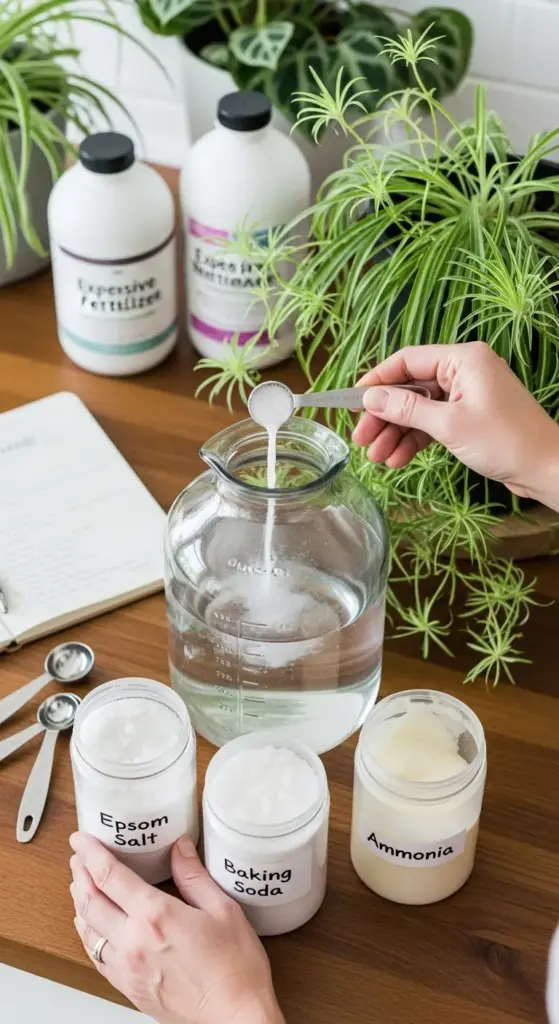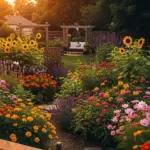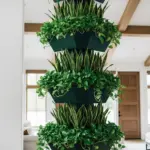Secret #5 – The Fertilizer Formula Master Gardeners Swear By

I used to be that person who bought every fancy plant fertilizer at the garden center, thinking more expensive meant better results. My poor spider plants were getting chemical overload and looking worse than when I started!
Then my grandmother shared her secret recipe that she’d been using for 40 years. Three simple ingredients that probably cost less than your morning coffee.
The Magic 3-Ingredient Recipe
Here’s the formula that transformed my sad, slow-growing spider plants into absolute showstoppers: 1 tablespoon Epsom salt, 1 teaspoon baking soda, and 1/2 teaspoon ammonia mixed into 1 gallon of water.
I know, it sounds like something you’d clean your bathroom with! But each ingredient serves a specific purpose that spider plants absolutely love.
The Epsom salt provides magnesium for those gorgeous green leaves. Baking soda helps with nutrient absorption, and the tiny amount of ammonia gives them a gentle nitrogen boost.
Why This Formula Actually Works
Commercial fertilizers are often too harsh for Chlorophytum comosum. They’re designed for heavy feeders like tomatoes, not these delicate beauties that prefer gentle, consistent nutrition.
My homemade mix delivers nutrients slowly and naturally. No chemical burn, no salt buildup that turns leaf tips brown and crispy.
Plus, it costs me about 15 cents per gallon versus $12 for store-bought liquid fertilizer. My wallet and my plants are both happy!
The Seasonal Feeding Schedule That Changed Everything
Here’s where I used to go completely wrong – feeding my spider plants the same amount year-round. Plants don’t work that way!
Spring (March-May): Feed every 2 weeks with full-strength mixture Summer (June-August): Feed weekly with half-strength mixture
Fall (September-November): Feed monthly with half-strength mixture Winter (December-February): No feeding at all
This mimics their natural growth cycles and prevents the dreaded winter fertilizer burn that killed my first spider plant.
Recognizing Over-Fertilization Before It’s Too Late
I learned this lesson the hard way when I got excited and started feeding my plants twice a week. The signs hit fast and brutal.
First warning sign? Leaf tips turning brown even when humidity is perfect. Then the leaves start looking unnaturally dark green and glossy.
The worst sign is when your spider plant stops producing plantlets altogether. Over-fertilized plants focus all their energy on leaf growth and forget about reproduction.
If you see white crusty buildup on the soil surface, that’s salt accumulation from too much fertilizer. Flush the soil immediately with plain water.
My Organic Pet-Safe Alternatives
When I got my cat Luna, I had to rethink my fertilizer game completely. Turns out, even my gentle homemade mix wasn’t the safest option around curious pets.
Banana peel tea became my go-to organic solution. I steep chopped banana peels in water for 48 hours, strain it, and use it monthly during growing season.
Coffee grounds mixed into potting soil work amazingly too, but only use them sparingly – about 1 tablespoon per 6-inch pot. Too much makes the soil too acidic.
The Eggshell Calcium Boost
This trick came from my neighbor who has the most incredible spider plant collection I’ve ever seen. She saves eggshells, crushes them up, and sprinkles them on top of the soil.
Calcium deficiency shows up as weak, floppy leaves that can’t support those heavy plantlets. The slow-release calcium from eggshells keeps everything strong and sturdy.
I crush mine in a coffee grinder and store them in a mason jar. One eggshell provides enough calcium for 2-3 plants for an entire season.
Common Feeding Mistakes That Kill Plants
Never, ever fertilize a dry plant. I cannot stress this enough! Always water first, then fertilize an hour later. Fertilizing dry soil burns roots instantly.
Also, don’t fertilize newly repotted plants for at least 6 weeks. Fresh potting soil already has nutrients, and adding more creates chemical overload.
I used to think yellowing leaves meant my plants needed more food. Usually it’s the opposite – over-fertilization causes nutrient lockout that looks like deficiency.
The Winter Feeding Trap
This mistake almost cost me my favorite spider plant. I kept feeding it through winter because it was still growing under my grow lights.
Even with artificial light, plants naturally slow down in winter. Their roots can’t process nutrients efficiently, so feeding them just creates toxic buildup in the soil.
If you absolutely must feed during winter, use quarter-strength mixture once a month maximum.
Ready for Perfect Timing?
Now that you’ve got the feeding schedule dialed in, your spider plants are probably producing babies like crazy! But here’s the million-dollar question – when exactly do you separate those adorable plantlets for the best success rate?
The timing secret I’m revealing next will literally make or break your propagation game. Get it right, and you’ll have a thriving plant nursery. Get it wrong, and those precious babies won’t make it past week one!









GIPHY App Key not set. Please check settings